
The safety of infants and toddlers while eating should always be a high priority for caregivers to ensure no accidents happen. Choking is one of the most common and preventable injuries in young children. This article details the most significant food-related risks that can pose an injury, why they pose risks, and the best methods to minimize danger when feeding a child. We will also cover strategies for planning simple, age-appropriate meals, monitoring meals, and what basic steps to follow when a child starts choking. Caregivers can create a safer environment for young children by identifying these risk factors and taking the appropriate precautions.
What Are the Most Common Choking Hazards for Babies and Toddlers?
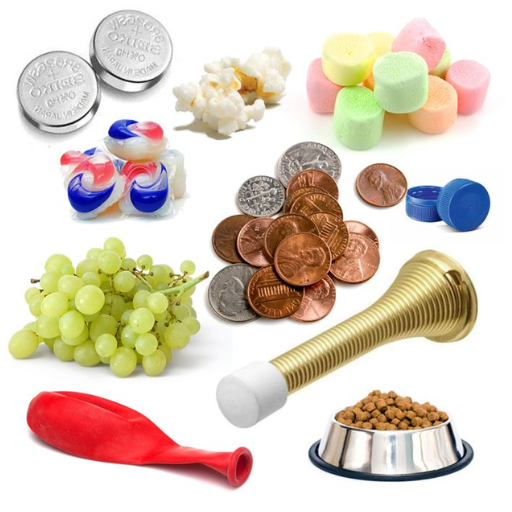
The possibility of choking in young children is that snacks, toys, and other things have the potential to get lodged in their airways based on their size or shape. Items that pose a high risk include whole grapes, nuts, raw vegetables, sticky foods like peanuts or marshmallows, and hard, round foods like candy. Nonfood items, including game pieces, coins, batteries, and other household items, are equally hazardous. Toddlers are particularly at risk due to their underdeveloped chewing muscles and natural oral inquisitiveness. These hazards are the first step toward preventing cases of excessive choking.
Recognizing Potential Choking Hazards in Foods
I consider the dimensions and form of the food I prepare to identify potential choking hazards in food. Foods such as hot dog slices, hard candies, nuts, whole grapes, and popcorn are naturally small or cylindrical- items that can easily obstruct the airway if modified improperly. To reduce risk, I slice food into tiny bite-sized pieces or mash it when serving to children. I tend to refrain from serving in large dollops such as peanut butter, which are sticky, as they can stick to the airway. These common risks allow me to remain vigilant and make safer choices during snack and meal time.
Why Certain Common Foods Pose a Risk
Several familiar foods present a choking risk owing to their size, shape, texture, or consistency, especially for children under four, whose average airway diameter is approximately 4–5 mm. Round or cylindrical foods like grapes, cherry tomatoes, hotdogs, and nuts are dangerously aligned with the size of an undeveloped airway because they can choke a child if they are not prepared correctly. For this reason, grapes and similar foods should be divided lengthwise into four parts, and cylindrical foods like hot dogs should be cut into thin strips.
On the other hand, sticky foods, like peanut butter or marshmallows, involve a different kind of risk. These can become thick, sticky masses that can get lodged in the throat, increasing the chances of choking. To minimize these risks, peanut butter should be spread thin, and marshmallows should be avoided altogether for younger children.
Finally, crunchy or hard foods, including popcorn, raw carrots, and hard candy, need special care. Softening these foods is necessary to help children chew and swallow quickly. Their high fracture toughness makes them dangerous, as the sharp pieces produced when biting them could cause injury. Cooking raw vegetables and avoiding hard candy for children considerably lessens their chances of suffering from these dangers.
These measures and a child's body's structural and growth features can significantly minimize the possibility of choking.
How to Identify Choking Hazards Among Popular Toddler Snacks
I always measure toddler snacks' apprehension based on choking hazards, such as size and texture, and how easily the food crumbles into pieces. Round, minor, or hard foods such as grapes, hot dog pieces, and nuts considerably raise the possibility of choking as they obstruct a child’s air passage. To lessen the risk, I will ensure that I chop these into smaller pieces or refrain from using them entirely. Even sticky or chewy snacks like gummies or marshmallows bother me since they can easily block air from getting through the throat. To determine the safety of foods, I ensure they are not too dry and can be mashed with my fingers, lest they be inhaled.
How Can You Minimize the Choking Risk with Food Preparation?
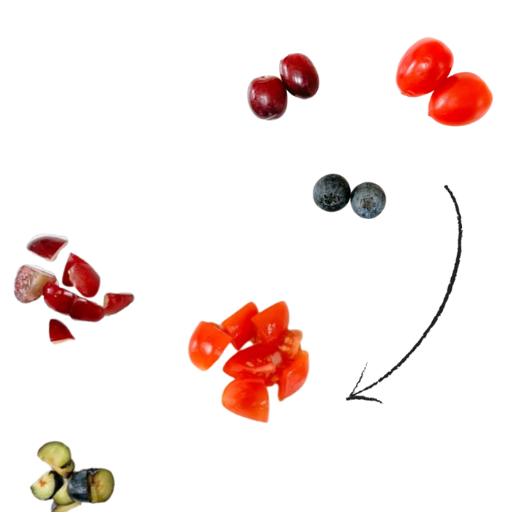
To reduce the chances of choking during food preparation, modifications must be made regarding the size, texture, and form of food provided to a child depending on his age. Foods like hot dogs, grapes, and cherry tomatoes should be sliced into small pieces to eliminate any chances of getting choked on them. Steamed or cooked vegetables like carrots or broccoli should be softened enough to be mashed easily. Do not give children sticky food items like popcorn, gummy candies, or even nuts, as they require a lot of chewing, which is harmful. Always observe children when they are eating to ensure they are chewing and swallowing correctly, thereby creating a safe eating setting. Following these steps dramatically reduces the chances of choking.
Techniques to Cut Foods into Small Pieces
Children will be able to eat foods that require cutting if it is done in a safe and manageable way. First, if you are handling cylindrical or round-shaped foods such as grapes and hot dogs, slice them widthwise. Then, they are cut into smaller segments no larger than 6mm thick. For tough vegetables like carrots and celery, begin with peeling, then cut them into strips or small cubes, which ideally shouldn’t exceed 12mm. Wider pieces are acceptable for soft foods like cheese and bread, as they can be diced and shredded into bite-sized pieces.
A sharp chef’s or paring knife and a sturdy cutting board can do the job when looking for tools to perform the cut. Slicing more challenging items like apples is far easier with a food processor, as it can mince with the proper settings. Crinkle cutters and vegetable slicers can turn the food into smaller pieces, making it easier to grasp without compromising safety. Following such steps for smoother preparations will significantly reduce choke hazards while ensuring safe food handling.
Why Steaming and Softening Foods Is Important
Steaming and Softening foods are crucial because they improve their digestibility and reduce the risk of choking for people who cannot chew extensively. Steaming helps nutrient retention because the moist heat softens food without losing nutritional value. Moreover, it softens food’s texture without losing flavor, making it more attractive to consumers. Encouraging this approach to cooking helps exercise these approaches to safety, which is paramount in food preparation.
Understanding the Role of Supervision During Meal Times
Supervision during meal times is paramount to ensure that safety is observed while simultaneously setting healthy eating habits. For instance, I monitor the children around me while they consume food to minimize the risk of choking, encourage them to chew, and maintain a calm atmosphere during meals. Moreover, I keep some of the key technical parameters important to children, ensuring that the kids are served small and soft, bite-sized portions of food that are not larger than half an inch. Above all, while the kids eat, I do not allow them to walk or play. These measures are in aid of expert advice to mitigate risks when children are left unsupervised.
Which Foods to Avoid Feeding Young Children?
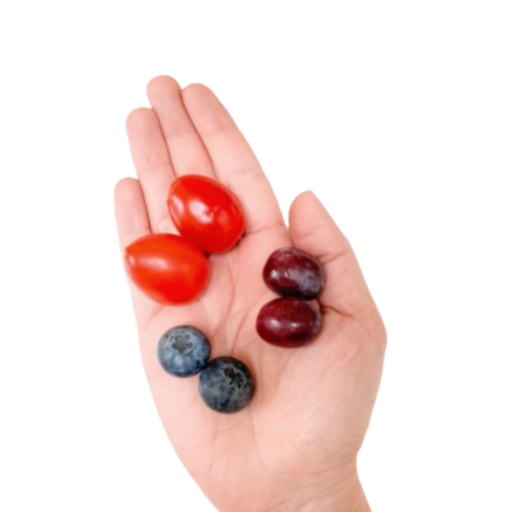
There are specific foods that pose unnatural risks to young children through choking hazards and allergic reactions. These foods include hard, round, or sticky items such as nuts, popcorn, grapes, carrots, or large chunks of cheese and meat. These foods should not be eaten whole but finely chopped or cooked until soft enough to avoid risk. Peanut butter and marshmallows are also blockages to airways if not consumed in moderation. Children should also refrain from eating or drinking anything with high sugar content, like candies, sugary drinks, and processed snacks, to help facilitate normal growth. Always scan the ingredient labels for allergens and consult with clinicians in case of concerns about overshooting the limit.
Top Foods to Avoid for Babies and Toddlers
- Honey
- Technical risk: Clostridium botulinum spores can cause infant botulism in children under 12 months due to an immature digestive system incapable of destroying these spores.
- Whole Nuts and Seeds
- Technical risk: High choking hazard for children under the age of 4. Nuts should be finely ground or as nut butter in thin spreads to prevent airway obstruction.
- Unpasteurized Dairy Products and Juices
- Technical risk: May contain harmful bacteria like E. coli or Listeria, leading to severe foodborne illnesses. All dairy and juices provided to young children should be labeled as pasteurized.
- Raw or Undercooked Eggs, Meat, or Fish
- Technical risk: Exposure to salmonella or other pathogens is risky. Foods of animal origin should be cooked to the safe internal temperature recommended by the USDA (e.g., 160°F for ground beef, 145°F for fish).
- Popcorn, Hard Candies, and Other Hard Foods
- Technical risk: Choking hazards due to their size, shape, and texture, which are difficult for young children to chew or swallow properly.
- High-sodium or High-Sugar Foods
- Technical risk: Introduces excessive sodium (>1,200mg/day for toddlers) or added sugars (>25g/day), exceeding dietary guidelines and posing risks of hypertension, obesity, and metabolic disorders in later life.
- Caffeinated Drinks or Energy Beverages
- Technical risk: Contains stimulants like caffeine that can overstimulate a young child’s nervous system and interfere with sleep and proper hydration.
Each food group listed should be evaluated for texture modifications, nutritional content, and adherence to pediatric dietary guidelines to ensure the health and safety of babies and toddlers.
Key Insights on Common Food Choking Hazards in Households
Choking is a significant health risk, especially for children under the age of 5, as their airways are smaller and their chewing and swallowing coordination is still developing. Below are some detailed findings on common choking hazards in households:
- Whole Grapes and Cherry Tomatoes
- Technical risk: Their smooth, round shape can easily obstruct the airway.
- Prevention advice: Always cut these foods into quarters for children under 4 years old to reduce the risk. The American Academy of Pediatrics (AAP) recommends avoiding whole grapes entirely for young toddlers.
- Nuts and Seeds
- Technical risk: Small, hard particles can block the airway or be aspirated into the lungs.
- Prevention advice: Whole nuts and seeds should be avoided by children younger than 5. Instead, opt for finely ground versions, such as nut butter spread thinly, to prevent clumping.
- Hot Dogs and Sausages
- Technical risk: These are regularly cited in choking incidents due to their cylindrical shape, which can lodge firmly in the trachea.
- Suggested precautions:
- Cut them lengthwise and then into small, irregularly shaped pieces for toddlers.
- Avoid cutting them into circular, coin-like slices, which can exacerbate choking potential.
- Hard Candy and Chewing Gum
- Technical risk: Sticky and hard-coated candies can block or partially obstruct the airway; chewing gum increases aspiration risk.
- Guidelines:
- Refrain from giving hard candy or gum to children under 5 years old.
- Monitor treats closely for older children and ensure they are eaten seated.
- Popcorn
- Technical risk: Its irregular shape and lightweight texture pose a choking hazard, particularly as popcorn shards can irritate the throat or lungs if inhaled.
- Recommendation: Avoid popcorn for children under 4 years old. For older children, serve in small quantities and ensure they sit while eating.
- Sticky Consistencies Like Marshmallows and Peanut Butter
- Technical risk: These can adhere to the roof of the mouth or throat, increasing the risk of choking, mainly when consumed in large bites.
- Expert guidance:
- Serve peanut butter spread thinly on bread or crackers to minimize clumping.
- Avoid serving sticky marshmallows to toddlers and supervise closely with older children.
-
Combined Technical Guidelines for Prevention
- Supervise Mealtimes: Adults should constantly monitor children during meals and snacks to ensure proper chewing and swallowing.
- Serve Smaller Portions: According to AAP guidelines, reducing the size of food to less than ½ inches (1.27 cm) significantly lowers the risk of most choking hazards.
- Chewing Milestones: Ensure the child is developmentally ready to handle different food textures and delay more complex foods until their molars are developed (typically by age 2–3).
- Encourage Sitting: Eating while running or lying down drastically increases the risk of choking. Make sure meal and snack times occur in a calm, seated environment.
By following these detailed recommendations, parents and caregivers can effectively mitigate choking hazards and create a safer eating environment for children.
Identifying Common Choking Hazards in Everyday Meals
When spotting typical choking risks in everyday meals, I notice the highly round, small, sticky, and hard foods as being the most concerning, so those cause the most harm. Hard candies, whole grapes, popcorn, raw vegetables, and nuts are specifically dangerous to young children. For this reason, I mitigate these risks by breaking foods into smaller pieces, such as cutting grapes into quarters or slicing hot dogs into strips. I also don’t serve sticky peanut butter to children; instead, I spread it on other foods. Knowledge of the main hazards and consistent with the prevention methods during preparation guarantees a child-friendly dining experience.
Why Are Choking Incidents More Frequent Among Children?

Physiologically and behaviorally, children have a higher susceptibility to choking incidents. Children have smaller and less developed airways, which makes it easier for obstructions to occur. Furthermore, children get distracted easily, making them put non-food items in their mouths, increasing the chances of choking. Adopting these shifts will result in a change in eating style so that these weaknesses can be mitigated by understanding.
The Role of Developmental Stages in Choking Risks
The likelihood of a child choking significantly depends on their developmental stage. Infants (0-12 months) primarily consume liquids and pureed foods because their oral motor skills are underdeveloped. Their tracheal diameter is about 4 mm at this age, making them very susceptible to small objects or food pieces blocking it. Toddlers (1-3 years) begin to self-feed and try out new food textures, but their occlusal bite strength is not fully developed, making it hard to chew certain foods adequately. Preschool-aged children (3-5 years) continue to struggle with swallowing coordination, and food pieces that are not uniform in size are difficult to ingest because of poor oral cavity control. Understanding these parameters in their physiology and developmental milestones can assist caregivers in preparing appropriate foods and meal supervision to reduce choking for each growth stage.
Exploring the Leading Causes of Choking in Children
Undoubtedly, children aged three years and below tend to choke on small toys, objects, or food ‘too’ small for children, such as nuts, whole grapes, hotdogs, candy, and popcorn. When these food items are especially consumed in mass, they tend to ‘stuff’ themselves, which blocks the child’s airway. In preschool children, coins, buttons, and batteries pose severe choking hazards while ‘exploring’ and can be consumed without much thought. In addition, most children’s toys intended for older children tend to have detachable parts that small children can choke on quite quickly. Care must be taken by supervising adults, cutting the foodstuff into pieces that can be managed, restricting children’s access to objects that can be choked on, and age-inappropriate toys for children younger than 4 years old.
What Should You Do in the Event of a Choking Emergency?

Unlike adults, children, especially infants, need immediate medical attention when they choke to prevent further complications like obstruction. Infants under the age of one can be administered backstrokes and forceful thrusts while the head and body are held. On the other hand, children over the age of one can have the object removed with Heimlich’s maneuver, and if done in an unresponsive state, start CPR while seeking medical assistance. Being well-versed in CPR is a prerequisite, especially in critical situations.
Steps for Performing the Heimlich Maneuver on a Child
- Assess the Situation
Ensure the child is choking and not coughing effectively. Unable to speak, cry, or breathe may indicate complete airway obstruction.
- Position Yourself
Stand or kneel behind the child, depending on their height, and wrap your arms around their waist.
- Locate the Correct Spot
Find the navel (belly button) and place the thumb side of your fist slightly above it, but well below the sternum.
- Perform Abdominal Thrusts
Grasp your fist with your other hand and deliver quick, inward, and upward thrusts. The force should be enough to create pressure in the airway but should not risk internal injury. Repeat until the object is expelled or the child becomes unresponsive.
- Follow Up if Necessary
If the child becomes unresponsive, carefully lay them on a flat surface and begin CPR immediately. Call for emergency medical assistance if the object is not cleared quickly. Continue attempting to open the airway until professional help arrives.
Technical Parameters for Thrusts: Ensure each thrust creates upward pressure sufficient to expel the obstruction without excessive force, as excessive pressure may cause internal injuries. Adjust thrust strength appropriately based on the child’s size and physical condition.
When to Seek Medical Help in Choking Situations
Immediate medical attention should be sought if the choking individual exhibits persistent symptoms or if attempts to clear the obstruction are unsuccessful. Indicators that medical help is necessary include:
- Unresponsiveness: If the child becomes unconscious, call emergency services immediately and begin CPR. Time is critical in such cases.
- Partial Airway Obstruction Persisting: Seek help if the child can still breathe but continues to show difficulty, such as wheezing, weak coughing, or cyanosis (bluish skin or lips). Persistent partial obstructions demand prompt, professional evaluation.
- After Object Expulsion: Even if the object is successfully expelled, a medical evaluation is advised to check for any internal injuries or complications, such as damage to the throat or airway swelling.
- Onset of Severe Symptoms: Sudden severe symptoms, such as stridor (high-pitched breathing sound), rapid deterioration, or an inability to cough or cry effectively, warrant urgent medical intervention.
Technical Parameters to Consider in Severe Situations:
- If initiating CPR, ensure chest compressions maintain a depth of approximately 1.5 inches (4 cm) for infants and about 2 inches (5 cm) for children, at a rate of 100–120 compressions per minute.
- Do not perform abdominal thrusts on infants under one year of age; instead, utilize a series of five back slaps followed by five chest compressions, as specified by the AHA guidelines.
- Maintain a safe force during all manual techniques to minimize risk of rib fracture or internal damage, especially in smaller children.
Seeking professional help ensures thorough evaluation and treatment, reducing the risk of secondary complications from choking.
How to Educate Caregivers and Parents on Choking Prevention
I provide clear, actionable guidelines based on evidence-backed safety standards to educate caregivers and parents on choking prevention. First, I emphasize the importance of monitoring children during meals and playtime, as unsupervised activities significantly increase choking risks. I explain that small, hard, round, or sticky foods—such as nuts, grapes, popcorn, and uncut hot dogs—should be avoided or adequately prepared for children under 4. For example, grapes and hot dogs should be cut lengthwise into small pieces no larger than half an inch. Non-food items like small toys, coins, and button batteries must also be kept out of children’s reach.
I also highlight the importance of age-appropriate feeding practices, such as ensuring children sit upright while eating and teaching them to chew thoroughly. Additionally, I advise caregivers to learn basic first-aid techniques like the Heimlich maneuver and back blows for infants and older children, following guidelines set by organizations like the American Red Cross or the American Heart Association.
For technical parameters, I recommend applying the following standards:
- Food Size for Young Children: Pieces should not exceed ½ inch to prevent airway obstruction.
- Toy Safety Compliance: Check for adherence to ASTM F963 standards, including size requirements for toys intended for children under 3 years old (must not fit within a small parts test cylinder).
- Supervision Ratio: Ensure 1:1 adult-to-child supervision during meals for young or high-risk children.
By combining practical steps with adherence to these technical guidelines, caregivers and parents can significantly reduce choking hazards in their environments.
References
- Choking Hazards | Infant and Toddler Nutrition - CDC
- Choking Prevention for Children - New York State Department of Health
- Choking Prevention for Young Children - California Department of Public Health
Frequently Asked Questions (FAQ)
Q: What are the most common food hazards that can lead to choking in babies and toddlers?
A: Common food hazards that can lead to choking in babies and toddlers include whole grapes, hot dogs, raw vegetables like carrots and celery, popcorn, peanut butter, hard candies, and food not cut into small pieces. It’s essential to be aware of these types of food and how they can become a choking risk.Q: How can I prevent choking when introducing solid foods to my baby?
A: To prevent choking, ensure solid foods are cut into small, manageable pieces. Foods like grapes and hot dogs should be cut into quarters or thinly sliced for toddlers. Always supervise your baby or toddler while they eat to keep a close eye on them, and avoid giving them small objects or foods that can easily block their airway.Q: Why is cutting certain foods like grapes and hot dogs important for babies and toddlers?
A: Cutting foods like grapes and hot dogs is essential because their shape and size can easily block a child’s trachea, leading to choking. Cutting them into small pieces reduces the risk of choking and ensures your child can chew and swallow safely.Q: What should I do if my child starts choking on food?
A: If your child starts choking on food, acting quickly is crucial. Encourage them to cough if they can. If they cannot cough or breathe, call emergency services immediately and perform first aid measures like back blows or abdominal thrusts. To be prepared for such situations, it’s best to receive pediatrician guidance on first aid methods.Q: Are there specific foods for babies that pose a higher choking risk?
A: Food like whole grapes, hot dogs, raw carrots, hard candies, and nuts pose a higher choking risk for babies. When introducing foods to your baby, ensure they are soft, cut into small, thinly sliced pieces, and easy for the baby to chew and swallow.Q: How can I tell when my child is ready for solid foods?
A: Your pediatrician can help determine when your child is ready for solid foods, but general signs include the ability to sit up with minimal support, showing interest in foods, and the ability to move food from a spoon into their throat without gagging. Introducing foods at the right time can help prevent choking.Q: Why is supervision essential when a baby or toddler is eating?
A: Supervision is vital because choking is silent; a child may be unable to make noise to alert you if their airway is blocked. By supervising, you can quickly intervene if a choking incident occurs and ensure your child eats safely.Q: What types of food should be avoided to reduce the risk of choking?
A: Avoid giving babies and toddlers hard candies, nuts, whole grapes, large pieces of meat or cheese, and raw vegetables. These foods can cause choking and should be cut into small pieces or avoided altogether until your child is older and can handle them safely.Q: How does the texture of food affect choking risk?
A: Food texture affects how easily it can become lodged in a child’s airway. Soft foods that can be easily chewed and swallowed are less likely to cause choking, whereas rugged, sticky, or tough foods like raw vegetables, peanut butter, and certain meats increase the risk. Always consider the texture when choosing foods for babies.


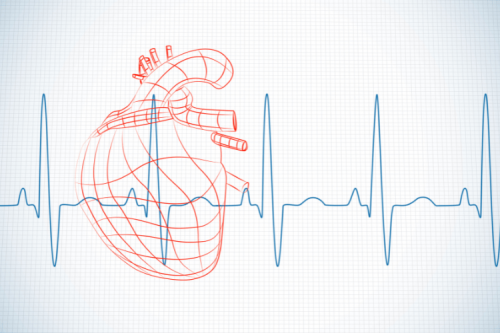
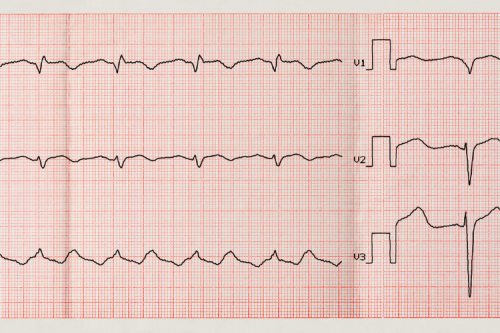

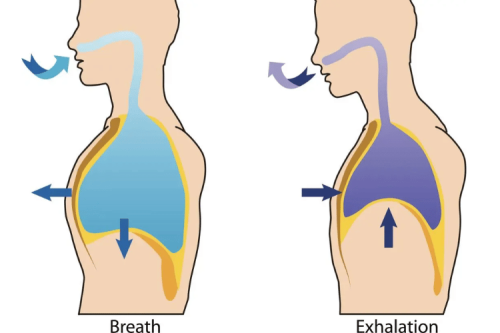
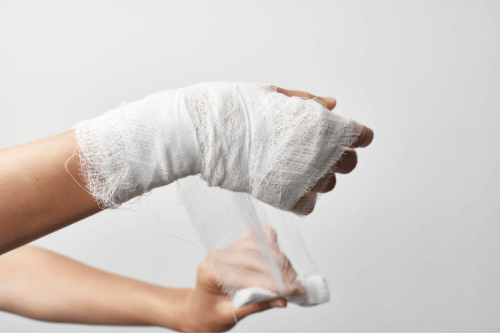
 Login with Google
Login with Google Login with Facebook
Login with Facebook